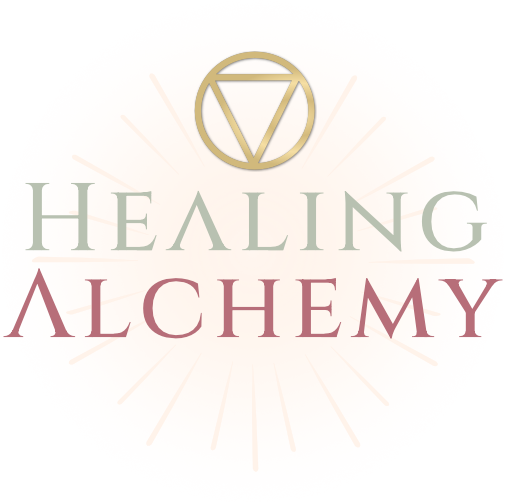New Possibilities as you Heal from Invisible Trauma
Healing from invisible trauma is a journey—one that is as empowering as it is challenging. For many years, you may have been living in survival mode, just trying to get through the day. And without the right guidance and resources, it may have been difficult to fully process the emotional wounds you’ve been carrying. But as you begin to heal, new possibilities open up, allowing you to move from just surviving to truly thriving.
Invisible trauma—whether it’s from neglect, emotional abandonment, or other painful personal experiences—can leave you feeling stuck, disconnected and unsure of who you are. Yet, as you embark on your healing journey, you’ll begin to recognise that the person you were in survival mode does not define who you truly are or who you can become.
This post is about embracing the transformation you’ll experience along your healing journey and preparing you for what lies ahead. I’m here to help you uncover the potential for growth within you and guide you in nurturing it so that you can become the version of yourself you were always meant to be. Healing opens you up to new ways of being, living and relating to others, helping you reconnect with the present moment and align deeply with who you truly are.
Personal Growth After Invisible Trauma
As you begin to heal from invisible trauma, you’ll start noticing subtle—but powerful—shifts within yourself. These changes may not happen overnight, and they may not be linear, but they reflect a quiet strength that’s growing inside of you. Personal growth doesn’t mean becoming someone new—it means remembering who you were before the world taught you who you should be. It’s about shedding survival patterns and reconnecting with your authentic. self.
Here’s what that growth can begin to look like in your everyday life:
Reclaiming Your Self-Worth

One of the most transformative shifts is no longer tying your worth to how others see or treat you. Where there was once self-doubt or the need to prove yourself, you begin to cultivate a deeper sense of intrinsic self-worth that doesn’t depend on anything outside of yourself.
You start believing that you deserve kindness, care and rest—not because you earned it or performed for it, but simply because you exist. There’s a beautiful inner tranquility that comes with recognising that your worth was never up for debate.
Healthy Boundaries to Protect Your Energy

Invisible trauma can blur the line between where you end and others begin. You may have learned to overextend yourself, people-please or put others first to stay safe or be accepted by others.
But healing invites you to draw boundaries—not to push people away, but to protect your peace. You start saying “no” without guilt, and “yes” only when it aligns with your needs. Boundaries become an act of self-respect rather than self-defence. They help you create space for rest, joy and connection on your own terms.
Being In-Tune With Your Inner World

Growing up without emotional safety can make it difficult to recognise how you feel. You might have learned to numb yourself, dismiss your feelings or stay strong no matter what.
But healing teaches you how to turn inward and listen. You begin noticing the stirrings of emotion—tightness in your chest, warmth in your belly, tears behind your eyes—and you welcome them with curiosity and acceptance instead of judgment and resistance.
You start being able to name the emotions you are feeling and tune in to discover what messages they have for you about what you need. And slowly, you begin to realise that your feelings are not ‘too much’ or ‘wrong’. They are an important part of your essence that make you unique and they carry messages to guide you back home to yourself.
Becoming More You

Invisible trauma often teaches us to play roles—caretaker, achiever, peacekeeper—anything to feel safe, accepted or needed by others. But those roles can keep us disconnected from who we really are inside.
As you heal, you will begin to shed these masks. You start saying what you mean, doing what feels right for you and trusting that who you are is enough. You realise that being true to yourself—even when it feels uncomfortable—is more important than being liked for a version of you that isn’t real.
You begin to reclaim your voice and take up space—not as a performance, but as a return to your essence.
Moving Towards Healthy Connection

Trauma can make relationships feel confusing or unsafe. You may have experienced one-sided connections, emotional withdrawal or caretaking dynamics that left you with unmet needs.
Healing helps you to recognise what safe, reciprocal connection feels like, first with yourself and then with other people. You become more discerning—not closed off, but selective. You start seeking relationships that feel mutual, where you can both be seen and held.
And maybe for the first time, you allow yourself to receive love without the fear of it being taken away.
Re-Connecting With Your Creativity

In survival mode, it’s hard to dream and use your imagination. When you are so focused on making it through the day, you do not have time to make meaning. But healing clears space for that spark of inspiration to return and re-ignite your creativity.
You might feel drawn to write, paint, make music, move your body or just daydream about new possibilities. Joy starts to bubble up from within you and come to the surface for you to experience again. You will find the urge to explore the passions that were once buried under the weight of invisible trauma and unprocessed grief.
Whether it’s a quiet walk, a creative project or a long-forgotten dream, you begin living from a place that feels more connected to your heart and the world around you.
Resilience To Get Through The Storms of Life

Perhaps one of the most empowering outcomes of healing is this: you trust yourself more. Life may still bring challenges, but you no longer feel as though you are lost or powerless when they happen.
You’ve learned how to soothe your nervous system—whether that’s through grounding, breathwork, or pausing to check in with yourself. You’ve got the tools you need to get through it. You’ve survived hard things and made it through the worst. And now, you know you can handle whatever comes next—not by bracing against life, but by moving through it with grace and strength.
Healing Is Messy & Confusing

Personal growth isn’t a straight line—it’s a winding, spiraling path with stops, starts, detours, and pauses. There will be days when you feel strong, clear, and deeply connected to yourself… and there will be days when old patterns resurface, emotions feel overwhelming, or progress feels invisible. That’s okay. It doesn’t mean you’ve failed. It means you’re human.
The messy middle is where so much of the real work—and real healing—happens.
You might revisit pain you thought you’d already healed. You might find yourself reacting in ways that feel “unhealed.” You might have moments of clarity followed by waves of confusion or self-doubt. This is all part of the process.
Growth isn’t about constant positivity or being “healed enough” to never struggle again. It’s about staying present with yourself through it all—with tenderness, honesty, and grace.
It’s in these moments—the messy, uncomfortable, unglamorous ones—that you have the chance to practice something powerful: self-compassion. Instead of asking, “Why am I still like this?”, you begin to ask, “What do I need right now?”
You learn to offer yourself kindness when things feel hard, to pause and soothe your nervous system, and to remember that even when it doesn’t feel like it, you are still growing.
Healing is not about perfection. It’s about resilience, awareness, and returning to yourself over and over again—with love.
You don’t have to do this perfectly. You only have to keep showing up—with gentleness, curiosity, and the knowing that each step forward (even if it’s tiny or wobbly) is a step toward freedom.
Inviting Gentle Expansion

As you move through healing, there may come a time when you feel a quiet nudge—a soft invitation to begin stretching beyond survival. Not in a rushed or pressured way, but in a way that feels spacious, kind, and rooted in self-awareness.
This is what gentle expansion looks like.
Growth doesn’t need to be loud or dramatic. Sometimes it’s found in the smallest choices:
- Picking up a journal and writing down how you’re really feeling
- Choosing rest over productivity
- Saying “no” to something that drains you
- Scheduling that first therapy session, or finding a book that speaks to your experience
- Spending time with someone who sees you clearly.
- Trying something creative just for fun
Each of these is a powerful act of healing. Not because it fixes anything, but because it reconnects you with yourself.
Personal growth isn’t about “fixing” what’s broken—it’s about shedding all that isn’t you. As you peel back the layers that survival mode wrapped around you, you allow more of your true self to come forward. This creates the space you need for more softness, curiosity, play and presence.
You don’t have to do everything at once. You don’t have to have it all figured out. The question is simply: What feels like the next small, manageable step today?
There is no timeline and no finish line either. Just this moment, and the next. And in each one, you get to choose how you meet yourself—with pressure, or with presence.
Choose presence.
You’re Allowed to Grow

You are not broken. You are becoming.
Healing from invisible trauma isn’t about becoming someone else—it’s about returning to who you’ve always been underneath the trauma. Each step you take, each layer you shed, each boundary you set, is evidence that you are growing.
You don’t have to wait until you feel “healed enough” to begin. Growth happens right alongside the grief and messiness of healing with the uncertainty of the unknown. You are allowed to expand, to soften, to dream, even as you continue to tend to your old wounds.
Take a moment to ask yourself:
What does growth look like for me, right now?
Maybe it’s resting more. Speaking up. Reaching out. Letting go. Starting something new. Or simply allowing yourself to feel proud of how far you’ve come.
Wherever you are on your path, I hope this space reminds you that you’re not alone—and that your healing matters. If this post resonated with you, feel free to explore other writings in the Personal Growth category. Each one is here to support you as you continue walking toward the life—and the self—you deserve.
You’re doing beautifully. Keep going.

